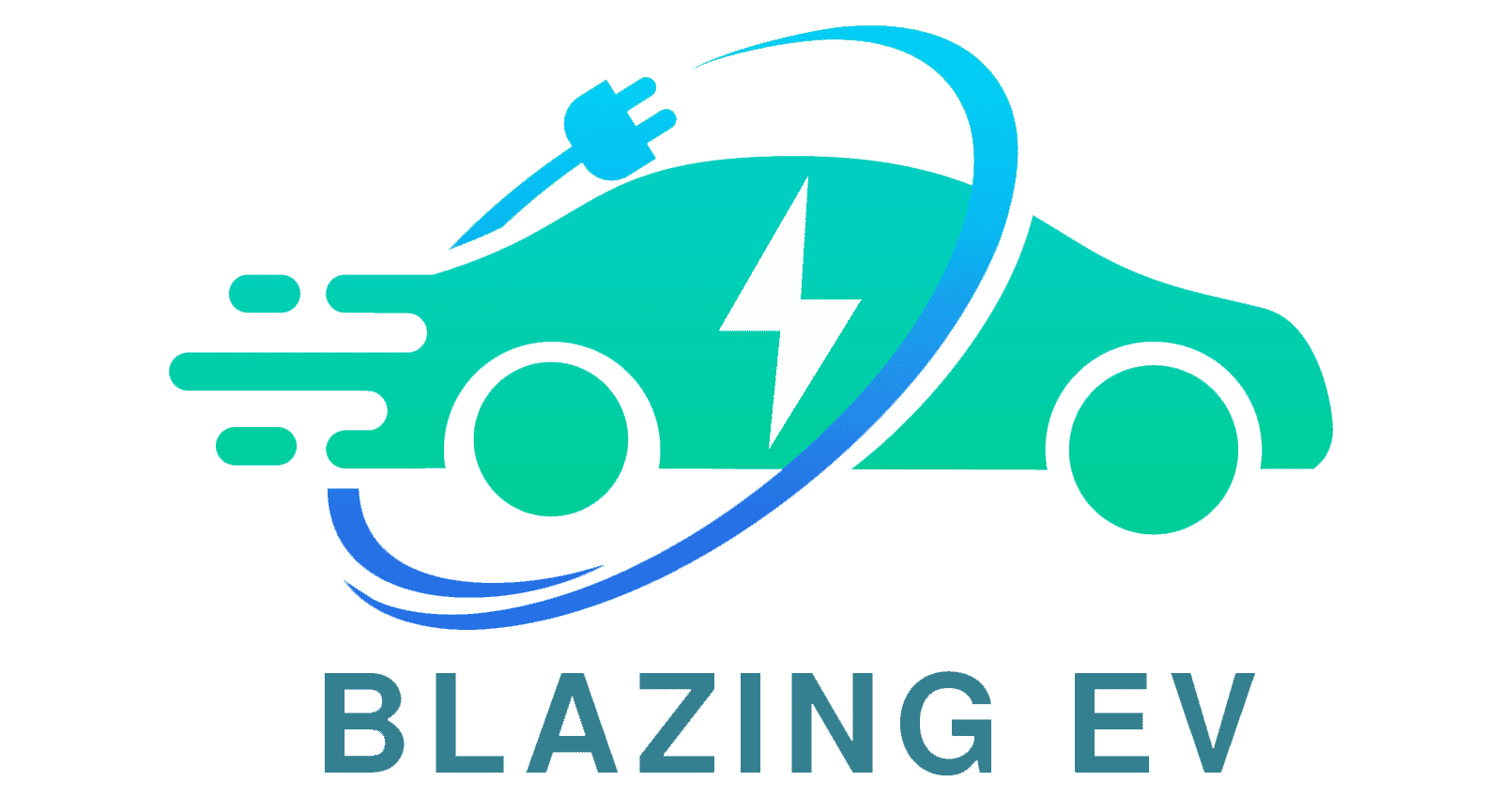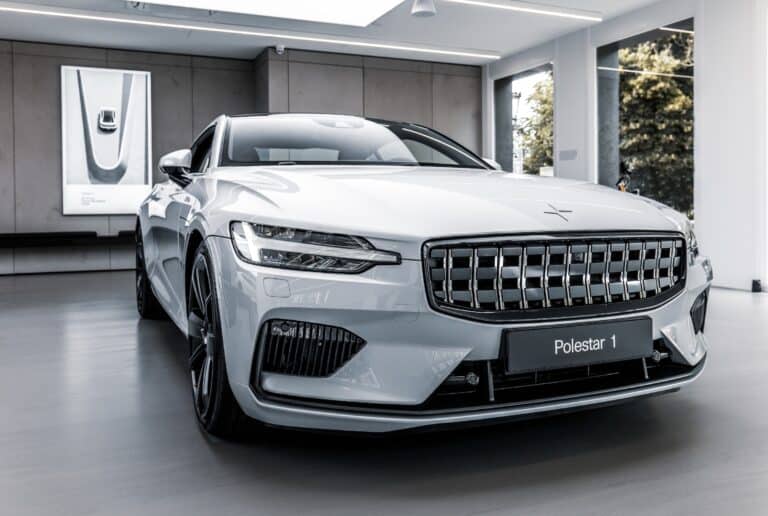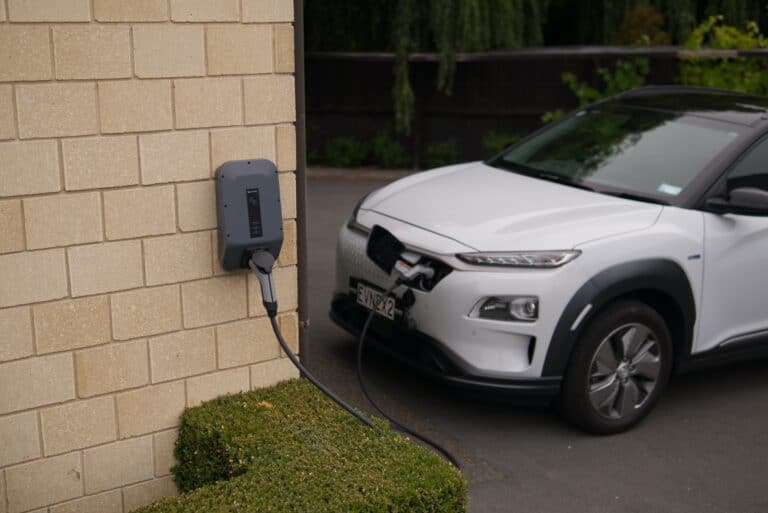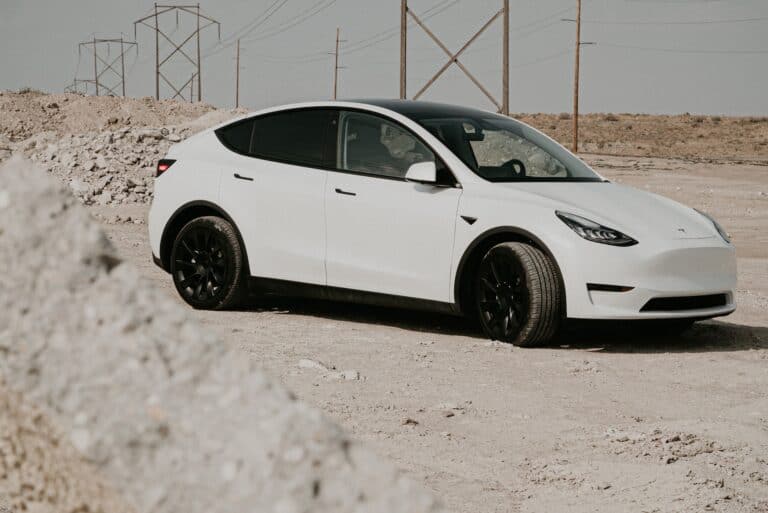Electric Vehicle Buying Guide Top 15 Questions for New Buyers

Are you looking for an electric vehicle buying guide? The switch to electric vehicles is happening at lightning speed, as gas vehicles are being phased out in favor of electric alternatives. If you’re in the market for an EV and have questions about the buying process, we’re here to help. Below, we’ve compiled 15 common questions you may have when shopping for an electric vehicle.
What is the range of an electric vehicle?
Battery technology is continuing to improve. There are many companies currently working on different formulations of battery materials to try and improve both charging speed and range. Currently at time of writing in 2023 the most commonly used battery technology is Lithium Ion and you can expect most electric vehicle to start at a range in the low to mid 200 miles.
Most manufacturers will offer battery upgrade options that get you higher mileage such as high 200’s and some have batteries over 300 miles. The Rivian R1T trucks can get 400 miles on their best battery. The Tesla Model 3 starts at 272 miles and the Tesla Model Y starts at 279 miles before upgrades.
What Options are There for Charging My Electric Vehicle?
When it comes to charging there are 3 different charging technologies to know about. They are called Level 1 charging, Level 2 charging and Level 3 or more commonly called DC Fast Charging. Level 1 is the slowest charger, Level 2 is much faster, and Level 3 or DC Fast Charging is the fastest charging technology available.
What are the different charging connector types for electric vehicles?
There are 3 commonly used connectors in EVs. The Tesla NACS, the CCS and the CHAdeMO. The CHAdeMO is currently being phased out it was used by Japanese automakers but the CCS and NACS are superior connectors so the CHAdeMO is still found on some vehicle most commonly the Nissan Leaf but going forward it will no longer be used.
Up until 2022 the Tesla NACS short for North America Charging Standard was only available to Tesla vehicles. But Tesla opened it up as an open source standard in November 2022 with the hopes of it becoming a standard hence the name. In early 2023 vehicle manufacturers began announcing they would switch to the NACS in 2025 on all of their vehicles. To learn more about that read our article entitled Which vehicle manufacturers are switching to the Tesla NACS
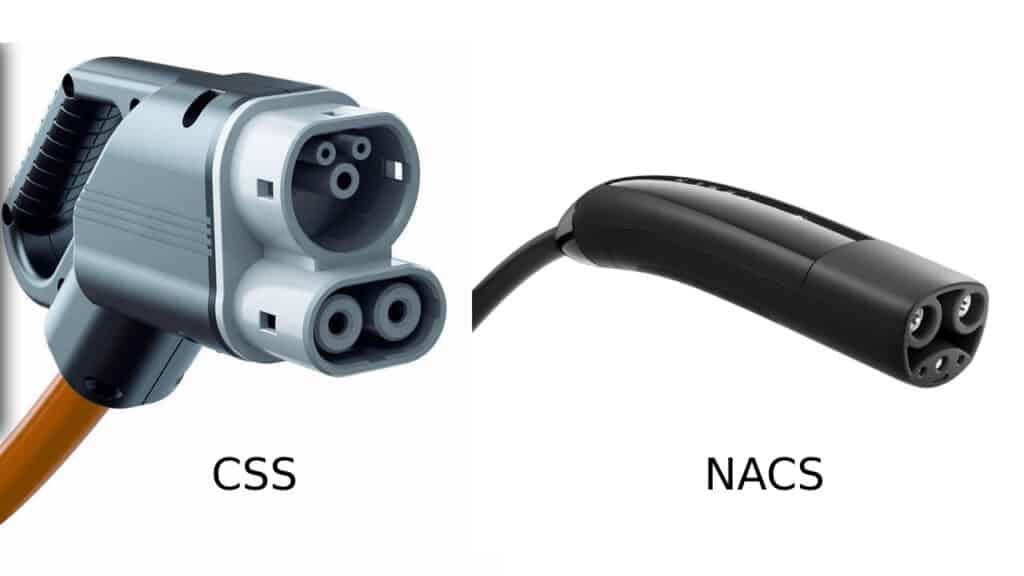
The CCS connector was standardized in Europe years ago as a government required standard that all car manufacturers use so it is very ubiquitous in Europe even on Teslas. In North America until recently most auto manufacturers were using the CCS as well until the majority of them decided to switch to the NACS by 2025.
Can I charge my electric vehicle at home?
Yes both Level 1 and Level 2 chargers are technologies you can use at home. DC Fast Charging is only available at public charging locations such as the Tesla Supercharger Network on the side of freeways and in parking lots as well as places like Electrify America or EVgo.
Level 1 chargers are the easiest to use. They plug into regular home power outlets and then plug into you vehicle. You can use them at home from any outlet or take your charger with you to charge at a friends house.
Level 2 chargers take a bit more work to setup because they require a dedicated circuit on your circuit breaker to be wired to your wall charger. There are many Level 2 wall chargers you can purchase from both vehicle manufacturers and third parties but lets use the Tesla Wall Connector as an example. It requires a dedicated 240 volt circuit and it will accept as low as 15 amps for they recommend for the fastest charging speeds to install a 60 amp circuit and put the 240 plug outlet in the location you will be charging your vehicle.
How long does it take to charge an electric vehicle?
The charging rate by vehicle will depend on several factors. First the type of wall outlet you are using and both the voltage and aperage it can output then the charger itself and how much power it can output and then finally the vehicle and the max rate of charge it can accept. This specifically applies to DC Fast Charging. Because some DC Fast Chargers can charge at a max rate of 350 kWh but not all vehicle are capable at charging that fast.
To give you some numbers I will use the Tesla Model Y because it is by far the best selling electric vehicle. On a Level 1 charger you will get 4 miles per hour added to the car. On a Level 2 charger using the biggest circuit it will accept at 60 amps you will get 44 miles per hour added to the car.
At the Tesla Supercharger which is a DC Fast Charger you will be able to add 162 miles of range to your Model Y in just 15 minutes.
What is the cost of charging an electric vehicle?
The cost to charge an electric vehicle will vary by region because electricity rates vary by region and state. Also charging at home will be cheaper than charging at a public charger. Not only do the public chargers pay commercial electricity rate they also have to include the cost of their infrastructure upkeep.
To continue using the Tesla Model Y as our example. The national average electricity rate in the United States is $0.17 a kWh. We calculate it would take about 18.75 kWh to fill the Tesla Model Y so that would cost a little over $3 to fully charge your Model Y. Compared against California the average electricity rate is $0.30 kWh this would mean it would cost $5.63 to charge the vehicle in California
Tesla Superchargers can be as low as $0.25 kWh and as high as $0.50 kWh. at 25 cents a kWh it would cost the following to charge Tesla’s fleet. The Model S $21.25 The Model 3 $18.75 The Model Y $18.75 and the Model X $22.50. Then at 50 cents a kWh it would cost. The Model S $47.20 The Model 3 $41.65 The Model Y $41.65 and the Model X $50.00
Are there any government incentives for purchasing an electric vehicle?
The federal government is still offering up to a $7,500 tax credit. However there are now several requirements to qualify for the credit including income limits and manufacturer requirements.
Income Limits On Tax Credit
From 2023 to 2032 the tax credit now has an income requirement. If you are single your income must not exceed $150,000. If you are head of household that limit jumps up to $225,000 and if you are married the income limit is $300,000.
Manufacturer Requirements to Qualify
There are also requirements on the manufacturer to be able to qualify for the credit. To qualify vehicles must be new, the MSRP cannot exceed $80,000 for vans, SUVs and pickups, or $55,000 for other vehicles. Must have a battery capacity of at least 7kWh, cannot weight more than 14,000 pounds, must have final assembly in the US and meet critical mineral and battery component requirements.
To learn more about the tax credit requirements you can view the official irs.gov website here.
Total Cost Of Ownership Gas VS Electric Vehicle
Comparing total cost of ownership has a few components to consider. First is cost of gas or charging the vehicle, second is depreciation how well each type of vehicle holds its value. Finally you want to consider the maintenance cost over the life of the vehicle.
First lets compare fueling cost. Lets take a popular gas vehicle the Toyota Corolla and a popular EV the Tesla Model 3 and calculate the cost to add 200 miles of range to each. For the Corolla at a national average gas price of $3 a gallon. It would cost you $20.01 to add 200 miles to your Corolla. Then the Model 3 at a national average electricity price of $0.13 per kilowatt-hour (kWh) it would cost you $7.80 to change your car. On the fueling calculation the EV wins by a significant margin.
Depreciation is a bit of a mixed bag, in 2020 iSeeCars a website that specializes in collecting data on the car market released a report. They found electric cars in general saw much high 3 year depreciation than gas vehicles. With one exception Tesla. Non Tesla EVs experienced 52% 3 year depreciation vs 39.1 % for gas sedans, 39.7% for SUVs, and 34.3% for trucks. Then comparing Tesla they found the Model S had a 36.3% depreciation after 3 years and the Model X depreciated 33.9%. In our opinion the Tesla depreciation is an encouraging sign. As EV technology matures and the battery technology improves depreciation will probably improve for all of the EV market.
Finally maintenance cost. the U.S. Department of Energy released a study in 2021 comparing the maintenance cost of electric vehicles to gas vehicles. They found that traditional gas vehicles have a maintenance cost of 10.1 cents per mile while electric vehicles maintenance cost is 6.1 cents per mile. Equating to a savings of 4 cents per mile. This is mostly due to the fact that electric motors significantly reduce the amount of parts that can need maintenance. EVs do not have transmissions, spark plugs, oxygen sensors, timing belts, fuel filters and more. Over a 3 year period that maintenance savings can add up and equate to about $1,400 in savings.

How Reliable Are electric Vehicles
As stated in the previous section Electric Vehicles have fewer parts and need less maintenance. This in theory should make them more reliable. However in 2022 Consumer Reports released a study finding EVs as a category having more frequent problems.
Owners reported problems “associated with battery packs, charging, electric drive motors, and unique heating and cooling systems that are required on vehicles that lack a conventional engine.”
Consumer Reports stated they believe this is due to the fact that EV technology is still very new. Tesla’s first car the roadster came out on 2008. This compared to over 100 years of development on the gas or internal combustion engine. The gas engine has had over 100 years to mature and become very reliable. As EV technology continues to improve they should at some point become even more reliable that gas engines due to the fact that there are fewer parts with the potential to breakdown.
How do I find public charging stations for my electric vehicle?
Many manufacturers have their own app and also integration charging stations into their dash infotainment system. Of course Tesla has the supercharger network that can be found through their app. Ford has what they call the BlueOval Charge Network that is a curated list of public charging stations that partner with Ford. This can be found in the FordPass app.
There are also a few companies that operate a large charging network. You can find their charging stations in their respective apps and sometimes get discounts with a membership to their company. Companies such as Electrify America or EVgo are some of the largest operating charge networks in North America
The U.S. Department of Energy operates a website to help you find charging stations from all available companies the like to that is here. Also there are some independent map sites such as ChargeHub.com and ChargeFinder.com
Can I take an electric vehicle on long road trips?
Yes long road trips or cross country trips are entirely possibly today. The charging infrastructure has improved enough to allow you to take a trip anywhere in the US. It helps to preplan your trip and map out your stops to prevent possibly running out of charge mid trip.

If you own a Tesla they have built a nice trip planner on their website. It allows you to pick you model Tesla, put in your start and stop destinations. It will recommend charge locations along your route and even tell you how long the charge will take at each stop. That can be found at Tesla.com/trip
What is the lifespan of an electric vehicle battery?
All EV batteries sold in the United States come with a warranty. Minimum the warranty will be for 8 years or up to 100,000 miles. According to JD Power, you can expect EV batteries to last 10 to 20 years. Factors that can reduce the battery lifespan include hotter climates and excessive use of Level 3 fast charging.
Tesla claims that they are seeing on average their vehicles only lose 12% capacity after 200,000 miles. Since EV adoption is accelerating battery technology has become a focus for improvement. As new formulations are developed and better batteries come to market we can expect the battery capacity to become more resilient over time.
Are there any specific insurance requirements for electric vehicles?
While there are no insurance requirements specific to EVs they tend to cost more to insure. The primary reasons are the higher vehicle MSRP and the fact they typically have higher repair bills. The Tesla Model Y costs around $2500 per year to insure. The good news is as technology becomes more mainstream and prices come down insurance costs should also come down. One good example is the Department of Energy has estimated that the cost of Electric Vehicle battery packs in 2022 are down nearly 90% from 2008.
Are there any special driver’s license requirements for electric vehicle owners?
No there are no special requirements for a drivers license to drive an electric vehicle. With the advent of self driving vehicles this might cause drivers license requirement to change in the future but currently you can drive any electric vehicle with your regular license.
Does The Air Conditioner Reduce Range?
Yes the air conditioner in you EV will be an extra drain on the battery and it will reduce your range. It will be very vehicle dependent because factors such as how efficient the air conditioner is and how large your battery pack is will both play a role in how much range is lost. Also how hot it is outside will affect the range loss as well. However in general you can expect your range to be reduced between 10% to 30%. This is compared to gas vehicles which tend to only lose about 5% to 10% of range on average.
Electric Vehicle Buying Guide Conclusion
With the migration to electric vehicles in full swing we hope you find this guide useful. The EV market has come a long way since they first came out in the early 2000’s. At that time they were considered mostly glorified golf carts, a novelty for the rich. We’ve come a long way since that time. Now EVs are practical, coming down in cost and for the daily commute better because of the lower cost of maintenance and the fact that you can charge it at home every night thereby avoiding having to stop and fuel up.
